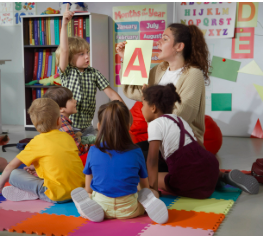Daily routines are more than just a schedule—they are a foundation for learning, security, and growth in early childhood classrooms. Young children thrive on structure, and consistent routines help them understand expectations, feel safe, and build confidence. For teachers and caregivers, routines offer a reliable way to manage time and guide children’s development in a nurturing environment.
Why Routines Matter
Routine activities, such as circle time, snack breaks, play sessions, and clean-up, create a rhythm that children can count on. This predictability reduces anxiety, especially during transitions, and supports emotional development. When children know what’s coming next, they are more likely to engage positively and develop a sense of responsibility.
Building Independence and Confidence
As children participate in daily routines, they begin to do more things for themselves. Whether it’s putting away toys or washing their hands before lunch, these small actions foster independence. Over time, children feel capable and proud of their contributions, which strengthens their self-esteem and social skills.
Enhancing Learning Opportunities
Daily routines naturally integrate learning moments. A morning greeting becomes a language lesson; lining up before recess teaches turn-taking; setting the table introduces counting and sorting. When learning is embedded in familiar activities, children absorb new skills more easily and apply them in real-life situations.
Creating a Calm and Cooperative Classroom
A consistent schedule helps manage group behavior by setting clear expectations. Children are less likely to act out when they know what is expected of them and when transitions are handled smoothly. Teachers can use songs, visual cues, or gentle reminders to guide students through the day, making the classroom more cooperative and joyful.
Adapting Routines with Flexibility
While routines offer structure, it’s also important to remain flexible. Every group of children is different, and individual needs may change throughout the year. Educators can adjust routines to match the pace and interests of the class, keeping children engaged while preserving the benefits of consistency.
Conclusion
The value of daily routines in early childhood classrooms goes beyond logistics. They provide a comforting framework that supports learning, builds life skills, and encourages positive behavior. When routines are used with care and flexibility, they become powerful tools for nurturing young learners in their formative years.


